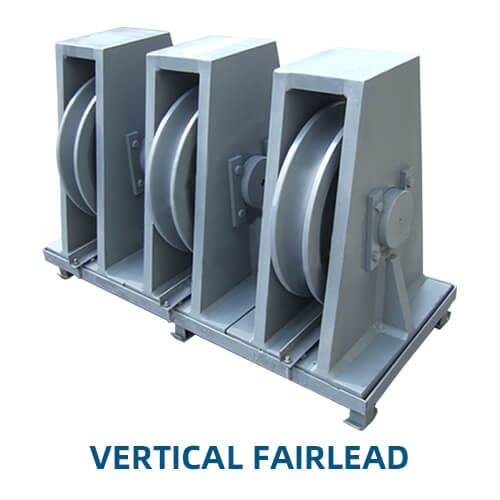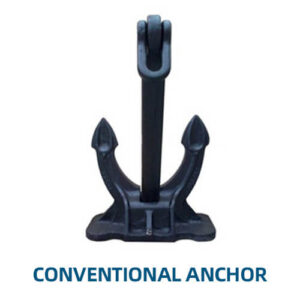Key Features of Vertical Fairleads:
- Design and Construction:
- Shape: Vertical fairleads typically feature a vertical orientation with a channel or U-shaped profile that guides the line vertically. The design helps direct the line along its path while allowing for smooth passage.
- Material: Constructed from durable materials such as stainless steel, cast iron, or high-strength alloys. These materials are selected for their resistance to corrosion, wear, and harsh marine conditions.
- Mounting: Usually mounted on docks, piers, or ships. The base is designed for secure attachment and stability, and can be bolted or welded in place.
- Types:
- Fixed Vertical Fairlead: Permanently installed and provides a stationary vertical guiding point for mooring lines. The fixed design is suitable for applications where the line path remains constant.
- Adjustable Vertical Fairlead: Features adjustable components that allow for changes in alignment or angle, providing flexibility in guiding lines based on operational needs.
- Applications:
- Dock and Pier Mooring: Used to guide mooring lines vertically as vessels dock and berth. Helps manage line direction and tension during mooring operations.
- Shipboard Operations: Installed on ships to manage lines such as anchor chains, mooring lines, and cargo handling ropes. Facilitates smooth movement and alignment of the lines.
- Marine and Offshore Platforms: Employed on floating platforms, oil rigs, and other offshore structures to guide vertical cables and lines, ensuring effective operation and reducing wear.
- Performance and Benefits:
- Controlled Guidance: Provides controlled vertical guidance for mooring lines, reducing the risk of tangling and misalignment.
- Wear Reduction: Smooth surfaces help minimize friction and wear on the lines, extending their lifespan and improving performance.
- Durability: Built from robust materials to withstand the harsh marine environment, including exposure to saltwater, UV rays, and physical abrasion.
- Maintenance and Care:
- Inspection: Regularly inspect vertical fairleads for signs of wear, corrosion, or damage. Check the mounting and alignment to ensure proper functionality.
- Cleaning: Clean the fairleads to remove marine growth, debris, and contaminants. Use appropriate cleaning agents and techniques to avoid damage.
- Repairs: Address any damage or issues promptly to maintain the fairlead’s functionality and safety. This may involve repairing or replacing components.
- Safety Considerations:
- Load Capacity: Ensure the vertical fairlead is rated for the specific loads and types of lines it will be handling. Overloading can cause damage or failure.
- Proper Installation: Ensure the fairlead is securely mounted and properly aligned to provide effective guidance for mooring lines.
- Line Management: Use appropriate line sizes and types for the fairlead to ensure proper fit and performance. Avoid overloading individual lines or components.
Advantages of Vertical Fairleads:
- Efficient Line Guidance: Provides effective vertical guidance for mooring lines, reducing the risk of tangling and misalignment.
- Reduced Wear: Smooth surfaces help reduce friction and wear on the lines, extending their lifespan and maintaining performance.
- Durability: Constructed from high-quality materials to handle harsh marine environments and heavy loads.
Considerations for Vertical Fairleads:
- Selection: Choose the appropriate size, type, and material based on the specific mooring requirements and the type of lines being used.
- Maintenance: Regularly inspect and maintain the fairlead to ensure continued functionality and safety.
- Compliance: Follow relevant industry standards and regulations for the design, installation, and maintenance of vertical fairleads to ensure safety and performance.
Vertical fairleads are essential for managing the vertical movement of mooring lines in various marine settings. Their design ensures effective guidance and reduces wear, making them valuable components for efficient mooring and docking operations.






